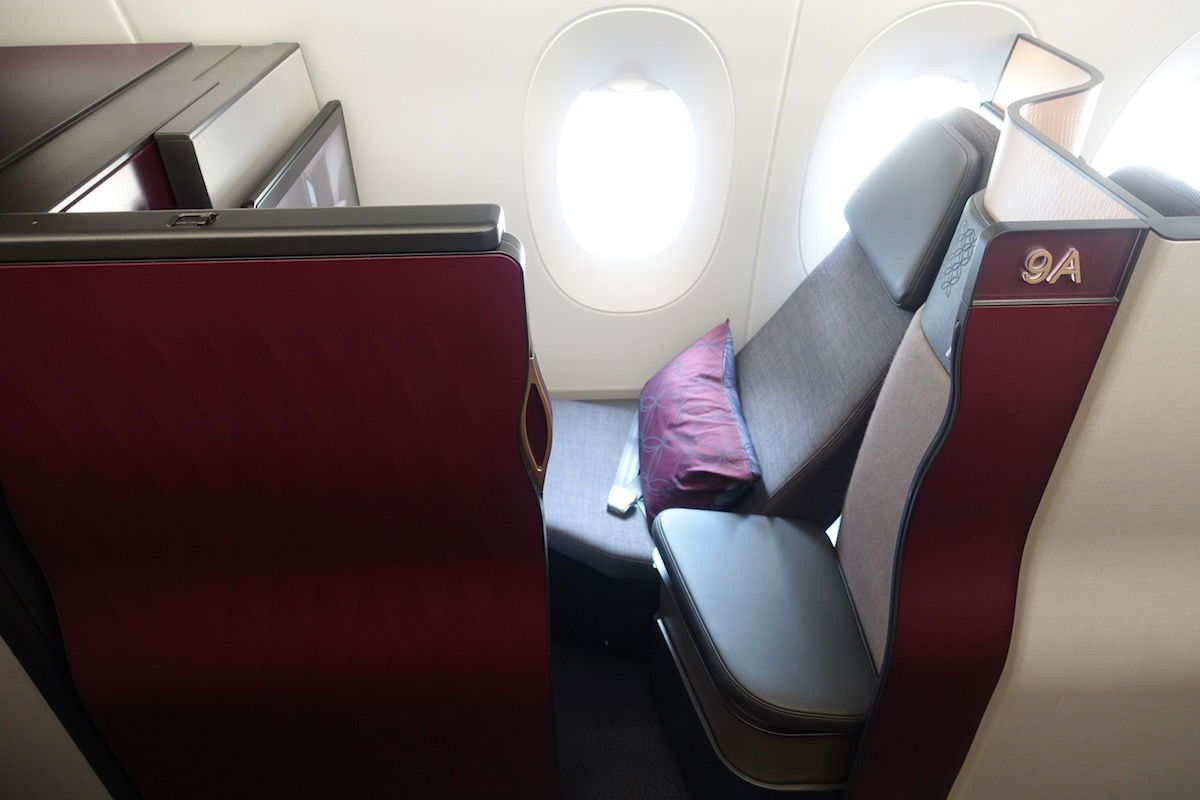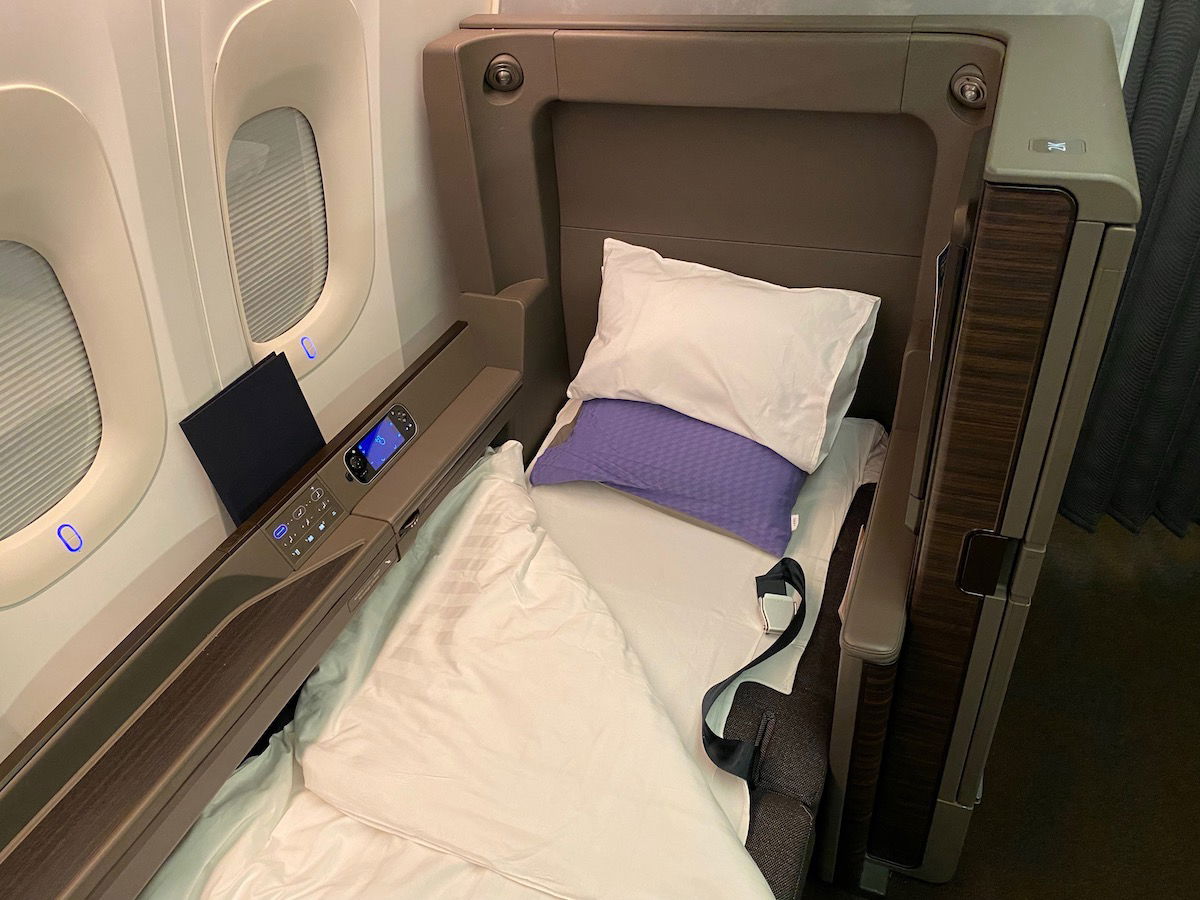Link: Apply now for the Capital One Venture X Rewards Credit Card or Capital One Venture X Business
In general, I recommend earning transferable points currencies with your credit cards whenever possible, to give you the most flexibility if you’re looking for travel rewards. Capital One has one of the major transferable points currencies, and two cards are particularly lucrative — the Capital One Venture X Rewards Credit Card (review) and Capital One Venture X Business (review).
In this post I wanted to take a more in-depth look at Capital One’s mileage currency, including how to earn and redeem Capital One miles.
In this post:
Basics of the Capital One mileage program
Several Capital One cards earn miles through the Spark and Venture cards, which give you great flexibility for travel redemptions. Capital One miles can be redeemed to offset the cost of a travel purchase or transferred to Capital One’s airline and hotel partners, which provide outsized value if you know what you’re doing.
The efficient flexibility provided by Capital One’s credit cards is pretty unbeatable, especially with the industry-leading return on everyday spending offered by Capital One cards.

How to earn Capital One miles
Let’s start by covering everything you need to know about earning Capital One miles — which cards earn Capital One miles, what’s the difference between the miles earned on a Spark or Venture card, and more.
What credit cards earn Capital One miles?
Here are the six cards that directly earn Capital One miles, along with the mileage earning rates, and the annual fees:
- The Capital One Venture X Rewards Credit Card (review) earns 2x miles per dollar spent; the card has a $395 annual fee, but offers all kinds of perks that help offset that, including a $300 annual travel credit and 10,000 anniversary bonus miles
- The Capital One Venture X Business (review) earns 2x miles per dollar spent; the card has a $395 annual fee, but offers all kinds of perks that help offset that, including a $300 annual travel credit and 10,000 anniversary bonus miles
- The Capital One Venture Rewards Credit Card (review) earns 2x miles per dollar spent; the card has a $95 annual fee
- The Capital One VentureOne Rewards Credit Card (review) earns 1.25x miles per dollar spent; the card has no annual fee
- The Capital One Spark Miles for Business (review) earns 2x miles per dollar spent; the card has a $95 annual fee, waived the first year
There’s another interesting angle for earning Capital One miles. Rewards earned on select Capital One cash back cards can be converted into Capital One miles (at the rate of one cent per mile) in conjunction with one of the above cards. For example, it could make sense to pick up the following cards to earn Capital One miles:
- The Capital One Savor Cash Rewards Credit Card (review) earns 3% cash back on dining, grocery stores (excluding superstores like Walmart and Target), entertainment, and popular streaming services; the card has no annual fee
- The Capital One Spark Cash Plus (review) earns 2% cash back on all purchases; the card has a $150 annual fee
If you ask me, the Capital One Venture X and Capital One Savor are a pretty unbeatable card duo, as you can earn 3x miles on dining, groceries stores, and more, while you can earn a minimum of 2x miles on all purchases. When it comes to business cards, the Capital One Venture X Business is tough to beat. All of these cards also have no foreign transaction fees.

What’s the difference between Venture & Spark miles?
Often, there’s confusion about the difference between miles earned on a Venture card and a Spark card. For all practical purposes, these currencies are the same — you’ll see the “Venture” branding on all personal cards and some business cards, while you’ll see the “Spark” branding on some business cards.
These points have the same redemption values toward travel, and can be combined if you have both personal and business cards. Despite the different card branding, these currencies are identical.
How fast do Capital One miles post?
One thing that makes Capital One miles unique is how quickly these rewards post. With other programs, rewards can take a couple of billing cycles to post to your account. In the case of Capital One:
- Miles post to your account at the same time as your purchase
- This even applies to welcome bonuses on cards
In an age where people love instant gratification, that sure is a nice feature, as you can redeem your rewards toward travel almost instantly.
How to redeem Capital One miles
Capital One miles are incredibly flexible, and can be redeemed either toward the cost of a travel purchase (for a statement credit or through the Capital One Travel portal), or they can be transferred to partner airline and hotel loyalty programs. Let’s discuss that in a bit more detail.
Redeem Capital One miles with statement credits
The most straightforward way to redeem your Capital One miles is directly toward the cost of a travel purchase. Each Venture or Spark mile can be redeemed for one cent toward the cost of a travel purchase.
You can choose to use miles to “wipe out” the cost of a travel purchase within 90 days of when you made the purchase on your Venture Card or Spark Miles Card. Remember that the Venture Card and Spark Miles Card offer 2x miles per dollar spent, meaning that the cards offer a minimum of a 2% return on spending (toward travel).
This allows you to make a travel-related purchase with your favorite travel provider (whether that’s an airline, hotel, online travel agency, Uber, Airbnb, or other travel company), and then receive a statement credit from Capital One for that purchase at the rate of one cent per mile.

This redemption option is so popular because there are no hoops to jump through — you don’t have to worry about airline or hotel blackout dates when redeeming points, and you don’t even have to book through a specific portal. You purchase with your card as usual, and then you can redeem for statement credits. It doesn’t get easier than that.
You can also redeem miles at the same rate through the Capital One Travel portal, though most will probably prefer the flexibility of just being able to book direct with their preferred travel provider.
Convert Capital One miles into airline miles & hotel points
Miles earned with Ventur and Spark cards can be converted into airline miles or hotel points in 19 participating programs. A vast majority of these partners allow 1:1 transfers. Since some Capital One cards earn 2x miles per dollar spent, the cards essentially offer two airline miles per dollar spent, which is a phenomenal return on everyday spending.

What airlines & hotels can you transfer Capital One miles to?
Below is the full list of 18 Capital One transfer partners, which includes 16 airline programs and three hotel programs.
Airline Partners | Hotel Partners |
|---|---|
Aeromexico Club Premier | |
How do you transfer Capital One miles to airline & hotel partners?
Transferring Capital One miles to airline and hotel partners is easy, and can be done directly on Capital One’s website. You can read about the process in this post.
How long do Capital One mileage transfers take?
Transfer times for Capital One partners vary. Transfers to most partners are instant, though for some partners, it can take anywhere from a few hours to a few days. You can read about Capital One mileage transfer times in this post.
Capital One Transfer Partner | Transfer Ratio | Transfer Time |
|---|---|---|
1000 : 500 | ~ 24 to 48 hours | |
Aeromexico Club Premier | 1000 : 1000 | Instant |
1000 : 1000 | Instant | |
1000 : 1000 | Instant | |
1000 : 1000 | Instant | |
1000 : 1000 | Instant | |
1000 : 1000 | ~ 3 to 5 days | |
1000 : 1000 | Instant | |
1000 : 1000 | Instant | |
1000 : 1000 | ~ 12 to 24 hours | |
1000 : 750 | ~ 24 to 48 hours | |
1000 : 1000 | Instant | |
1000 : 600 | Instant | |
1000 : 1000 | ~ 24 to 48 hours | |
1000 : 1000 | ~ 24 to 48 hours | |
1000 : 1000 | Instant | |
1000 : 1000 | ~ 24 to 48 hours | |
1000 : 1000 | Instant | |
1000 : 1000 | Instant |
Look out for Capital One mileage transfer bonuses
While Capital One miles transfer to most airline partners at a 1:1 ratio, we sometimes see transfer bonuses, whereby they transfer at a better rate for a limited time. This can stretch your Capital One miles even further. This is always worthwhile if you have an immediate use in mind for points, and in some cases, a speculative points transfer could also make sense.
What’s the best use of Capital One miles?
Hopefully the above gives you a general sense of redemption options with Capital One miles. I now wanted to get into a bit more detail to help people decide which Capital One mileage redemption option makes the most sense for them. Are you better off redeeming Capital One miles toward the cost of a travel purchase, or converting Capital One miles into points with partner programs?
Statement credits vs. mileage transfers
If you’ve been a longtime Capital One customer, odds are that you’re used to redeeming your miles for statement credits toward travel purchases. After all, that’s Capital One’s oldest redemption feature, and what initially set the card issuer apart on the travel front (“no blackout dates!”).
Ultimately, this is a good option — it’s an easy redemption with no learning curve, it gives you lots of flexibility, and given that many Capital One cards earn 2x miles per dollar spent, you’re still earning a good return on your spending.
The benefit of converting Capital One miles into airline miles is that often the cost of a ticket when paying cash isn’t correlated to the cost of a ticket when redeeming points. While the statement credit redemption option gives you a consistent one cent of value per mile, with airline and hotel points you could be getting anywhere from a fraction of a cent of value per mile, to 10+ cents of value per mile.
The greatest value to be had with converting Capital One miles into a partner currency is if you want to redeem your rewards for international first and business class airline tickets. Many people think that these kinds of flights are out of reach, but with airline miles they are more attainable than you might expect!
Let me give a few examples based on my recent travels.
Capital One miles transfer at a 1:1 ratio to Air France-KLM Flying Blue, and I’ve redeemed 50,000 Flying Blue miles for a one-way Air France business class ticket from New York to Paris. If paying cash, that ticket would have cost thousands of dollars. The opportunity cost of 50,000 Capital One miles would be a $500 travel purchase with statement credits.

Capital One miles transfer at a 1:1 ratio to Emirates Skywards, and I’ve redeemed 102,000 Emirates Skywards miles for a one-way Emirates first-class ticket from New York to Milan. If paying cash, that ticket would have cost $5,500+. The opportunity cost of 102,000 Capital One miles would be a $1,020 travel purchase with statement credits.

Capital One miles transfer at a 1:1 ratio to Air Canada Aeroplan, and I’ve redeemed 100,000 Aeroplan points for a one-way Lufthansa first class ticket from Miami to Frankfurt. If paying cash, that ticket would have cost $8,000+. The opportunity cost of 100,000 Capital One miles would be a $1,000 purchase with statement credits.

Mileage transfers give you access to more airlines than you think
The beauty of these frequent flyer partnerships is that, in the end, you can redeem miles on many more airlines than just Capital One’s direct partners. Capital One miles can be transferred to over a dozen airline programs. That’s great in and of itself, but the reality is that you have access to way more airlines than that.
Why? Because airline loyalty programs, in many cases, have multiple airline partners as well. Just because you transfer miles to an airline loyalty program doesn’t mean you actually have to fly with that airline:
- Capital One miles can be transferred to Air Canada Aeroplan, and you can redeem Aeroplan points for travel on any of the over two dozen Star Alliance airlines (including United Airlines), plus airlines like Air Mauritius, Air Serbia, Azul, Gulf Air, and many more
- Capital One miles can be transferred to Air France-KLM Flying Blue, and you can redeem Flying Blue miles for travel on any of the nearly two dozen SkyTeam airlines (including Delta Air Lines)
- Capital One miles can be transferred to Cathay Pacific Asia Miles, and you can redeem Asia Miles for travel on any of the over dozen oneworld airlines (including American Airlines)
Websites like point.me can help you visualize all the ways that you can redeem transferable points currencies for award flights.

As you can see, Capital One miles give you access to all of the “big three” alliances, and then there are many more airline partners on top of that. The amount of flexibility you’re getting with your miles here is huge, so look beyond the airline transfer partners as such.
Why you shouldn’t always transfer Capital One miles
While the ability to convert Venture and Spark miles into airline and hotel points is exciting, there are still going to be plenty of circumstances under which you get a better deal using the statement credit redemption method. I’d say this is especially true if you primarily travel domestically, and are happy flying economy and staying at reasonably priced hotels.
For example, in the United States, we have ultra-low-cost carriers that have really lowered the cost of airfare in many markets. Generally, these airlines don’t have robust loyalty programs, and there’s no way to transfer miles to those programs efficiently.
If you have Capital One miles and are looking to travel to Orlando for spring break on Frontier Airlines or Spirit Airlines, the statement credit feature might be the best option — you can buy your ticket as you usually would, and then have the cost reimbursed.

Furthermore, those who are into earning elite status with airlines and hotels might appreciate the value of redeeming for statement credits. Why? Because you can book travel as you usually would (whether flights or hotels), and that would be considered paid travel. With both airlines and hotels, this means you could take advantage of elite perks and earn points.

Tips before converting Capital One miles into airline miles
The statement credit feature makes using Venture or Spark miles so straightforward, and that simplicity has been a large part of the appeal of the rewards program for years. If you’re a cardmember who is used to that, the number of hoops you have to jump through to redeem airline miles might come as a surprise.
If you are going to convert Capital One miles into airline or hotel points, I’d generally recommend going through the following process:
- Study the loyalty program transfer options that Capital One is offering
- Look at their respective award charts to understand how many miles are required
- Find out what partners these loyalty programs have beyond their “home” carrier, so you know which airlines you can redeem on
- Try to search availability for yourself to get a sense of how many award seats there are; sometimes this can be done directly on the loyalty program’s website, while in other instances you have to call
- Once you’ve verified there’s availability and have verified the price (both in terms of miles and cash), transfer your Capital One miles to the loyalty program
- Airline award availability is capacity controlled and subject to change, so you’ll want to book as quickly after finding the award availability as possible
- If your plan is to book a hotel room, check to make sure the property you are looking at has availability on the dates you need
- Don’t transfer points to a partner until you’re ready to book and know exactly what you want to redeem for

How much are Capital One miles worth?
Personally, I value Capital One miles at 1.7 cents each. That’s primarily because of the ability to transfer Capital One miles to most airline partners at a 1:1 ratio, which is a great use of points, especially for international first and business class redemptions. For that matter, I think all transferable points currencies are worth 1.7 cents each, based on partner redemption opportunities.
When you consider that some Capital One cards earn 2x miles on everyday purchases, to me these cards offer an incredible 3.4% return on everyday spending.
Bottom line
Capital One’s mileage currency has become increasingly useful in recent years, especially with the popularity of the Capital One Venture X Card and Capital One Venture X Business.
The beauty of Capital One’s travel ecosystem is that cards offer an excellent return on everyday spending, and Capital One miles are also incredibly flexible. In addition to being able to redeem them for one cent each toward the cost of virtually any travel purchase by redeeming miles for statement credits, you can also transfer them at a 1:1 ratio to over a dozen airline frequent flyer programs, which is where you’ll really get outsized value.
If you’ve earned Capital One miles, what has your experience been with them?





Just transferred 75k C1 miles to Wyndham for a five night stay in Kauai, $2,700 cash price, 3.6 cpp. Amazing deal!!
You can usually buy Wyndham points for around a penny a point. 15K/night x 5 nights=75K Wyndham points, which could be bought for ~$750. You are getting nice value but it really is closer to 1 CPP. Wyndham in Kauai (and other places) offer a nice arbitrage with fixed award pricing, variable cash pricing, and points cheaply available in cash (somewhat similar to IHG and Hilton at times).
Hey Ben, I did a capital one transfer to Cathay last year and it was done pretty close to instant. Maybe it has changed?